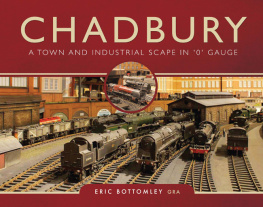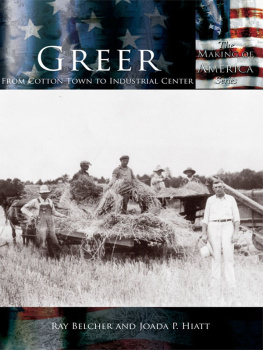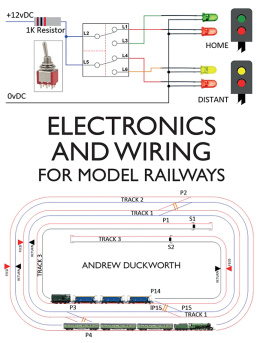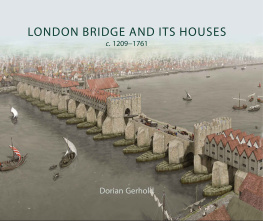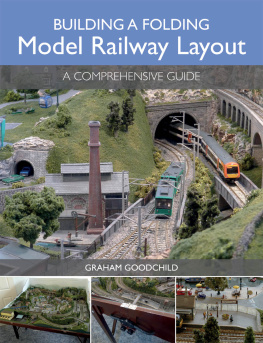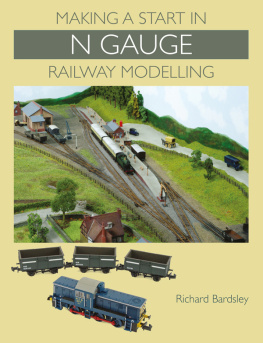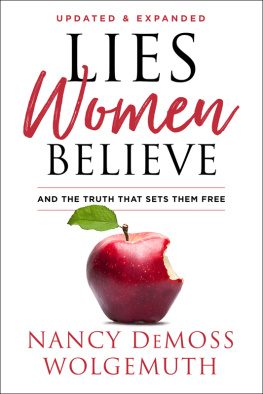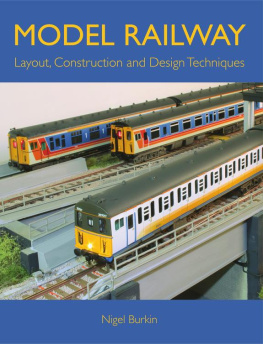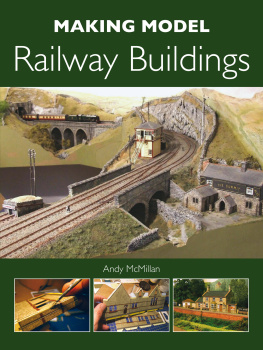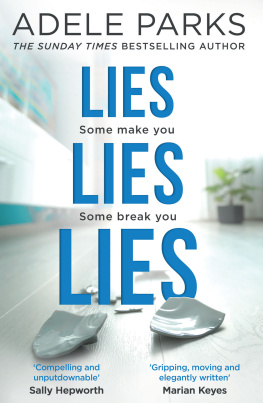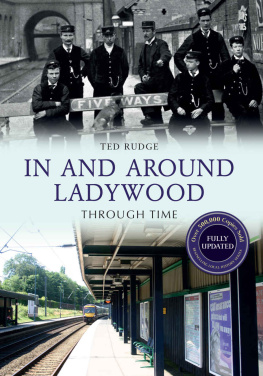
CHADBURY
A TOWN AND INDUSTRIAL SCAPE IN 0 GAUGE
CHADBURY
A TOWN AND INDUSTRIAL SCAPE IN 0 GAUGE
Eric Bottomley GRA

First published in Great Britain in 2017 by
Pen & Sword Transport
An imprint of Pen & Sword Books Ltd
47 Church Street
Barnsley
South Yorkshire
S70 2AS
Copyright Eric Bottomley, 2017
ISBN 9781473876323
eISBN 9781473876347
Mobi ISBN 9781473876330
The right of Eric Bottomley to be identified as the author of this work has been asserted by him in accordance with the Copyright, Designs and Patents Act 1988. All rights reserved. No part of this publication may be reproduced or transmitted in any form or by any means, electronic or mechanical, including photocopy, recording or any information storage and retrieval system, without the prior written permission of the publisher, nor by way of trade or otherwise shall it be lent, re-sold, hired out or otherwise circulated without the publishers prior consent in any form of binding or cover other than that in which it is published and without a similar condition including this condition being imposed on the subsequent purchaser.
Pen & Sword Books Ltd incorporates the imprints of Pen & Sword Archaeology, Atlas, Aviation, Battleground, Discovery, Family History, History, Maritime, Military, Naval, Politics, Railways, Select, Social History, Transport, True Crime, and Claymore Press, Frontline Books, Leo Cooper, Praetorian Press, Remember When, Seaforth Publishing and Wharncliffe.
For a complete list of Pen and Sword titles please contact
Pen and Sword Books Limited
47 Church Street, Barnsley, South Yorkshire, S70 2AS, England
E-mail:
Website: www.pen-and-sword.co.uk
DEDICATION
A complete model railway encompasses many skills and I certainly do not have all of them. Therefore I would like to dedicate this book to three people who have helped me over the years to create Chadbury. Alphabetically they are Adge Henshaw, Norton Jensen, and Fred Lewis. I thank them for their skills their time and their friendship. May our teapot never go cold!
E.B.
I would also like to thank the following for their invaluable help - to my dear wife Jacqui for her help and understanding also Paul Beatty, Philip D Hawkins, David Mocatta, & John Scott-Morgan.
Photography by James Purssell
Track plan CAD Keith Wesley
INTRODUCTION
M y career in illustrating transport scenes and especially railways inevitably led me to the world of model railways. Initially through a meeting with Peter Farish, the then managing director of Grafar model railways, who commissioned me to paint a picture of a Black 5 to co-inside with their latest model of this loco in N gauge (2mm- foot). In the 1970s N gauge was gaining popularity at this time as it suited small rooms, even a table top could support a reasonable model railway layout. Later Grafar commissioned me to produce a series of model buildings. After photographing the type of buildings we had discussed I then set about drawing them to scale twice the size they were to be printed. They were printed on sticky backed paper to be cut out and stuck on to a series of blocks provided. Everything from terraced houses to factories and of course railway stations, bridges, goods warehouses etc.
It was great fun choosing various buildings around the Poole and Wimborne area where I lived at that time. It also gave me a greater awareness of design and proportion, useful many years later when building my O gauge layout Chadbury. On my trips back home to my parents in Lancashire I would photograph some remaining industrial buildings, such as cotton mills and factories that were being demolished or adapted for other usage. I often wondered what passing motorists thought of this odd person with his tape measure across a cotton mill window!
In Peter Farishs effort to help me to get on in my career he introduced me to model railway exhibitions by allotting me space to exhibit my paintings on the Grafar trade stand. I remember being awestruck at the size of the International Model Railway Exhibition (IMREX) at Wembley conference centre. I marvelled at the model railway layouts and my involvement with N gauge soon leaped across OO to a greater interest in O gauge. My first purchase being a barter for one of my paintings in return for an industrial Pecket 0-6-0 saddletank. This in turn led me to purchase the Sevenscal kit for a Lancashire & Yorkshire 0-4-0 Pug. I seem to remember the wording on the instructions saying can be built with a few simple tools. I soon realised my limitations as a kit builder having put together body and cab; then to the rescue came a kit building friend who fitted the motor and gearbox and told me that my few simple tools were not up to the job. Since then I have left loco kit building to persons more suited to that purpose, with skill and patience that eludes me in that direction.


Grafar buildings continued:

8F No. 48523 and WD No. 90257 double-head a coal train past the canal basin.

Looking down Bridgewater Street.

My first wharf building straddling the canal with Peckett 0-4-0 industrial saddletank busy at work.
CHADBURY
S o I had to build my own layout, but what would it represent? Well, without any hesitation it had to depict the Lancashire townscape in which I grew up, with cotton mills, factories and endless rows of terraced houses. Not only did this represent my boyhood surroundings but the buildings themselves would offer me great scope in modelling.
This photo depicts a time when cotton was king and a working mans life meant nothing but toil and poverty. Rows of terraced houses sat in the shadows of dark satanic mills. My home town of Oldham was such a place. By 1921 it had built 320 cotton mills and at that time was employing 34,264 people. Much of this industrial architecture still remained during my childhood leaving indelible memories in me and provided the inspiration for Chadbury.
In total contrast to the above at the time my layout began I was living in the rural county of Herefordshire in an Old Coach House in the lovely village of Much Marcle near Ledbury. It had an enormous garage which in days past was owned by the Vicar and housed his coach and horses with stables at the rear. This vacuous space was wasted so I had a floor put in to create two upstairs rooms and knocked a doorway through to the house. I needed the space to house my ever growing stock of fine art prints and greeting cards, so above all this I would create the O gauge layout. The baseboards were in fact the melamine doors that I had replaced throughout the house with pine doors. I had a whole stack of them and in this day and age of recycling it seemed a great shame to waste them. These doors of course had their faults for when it came to wiring the track we had to get the wires through two layers of plywood with a cardboard filled vacuum inside. The good thing about them was they were light and ideal for canal modelling as you could cut through the top ply and scrape out the cardboard making a perfect depth for canal use. I fixed a batten all round the walls of the two rooms and sat the doors on this, then attached legs to the front screwed into the floor. The baseboards now in position it was down to track work. The track I bought was Peco streamline fine standard bullhead rail. The name Chadbury is derived from the first part of Chadderton (Oldham) where I grew up, and Bury where my wife Jacqui comes from.
Next page
